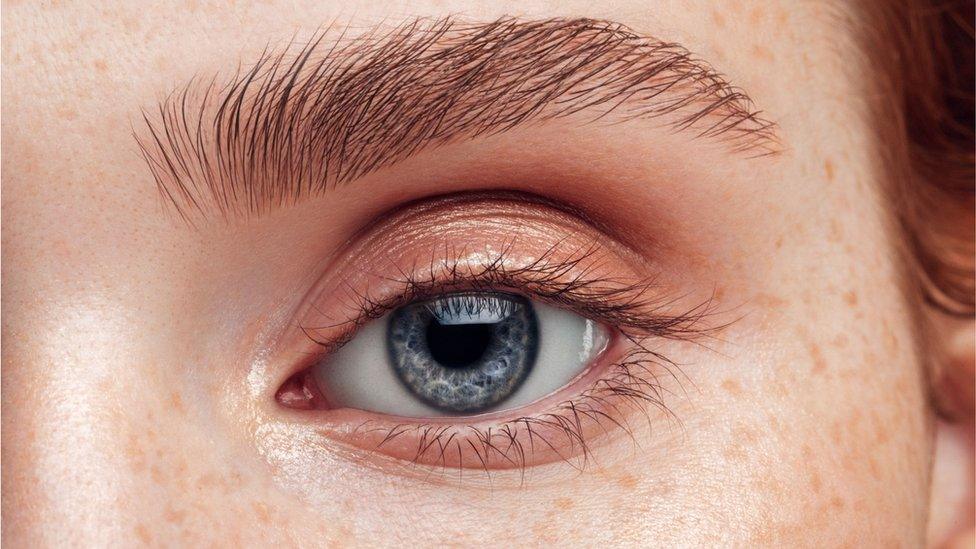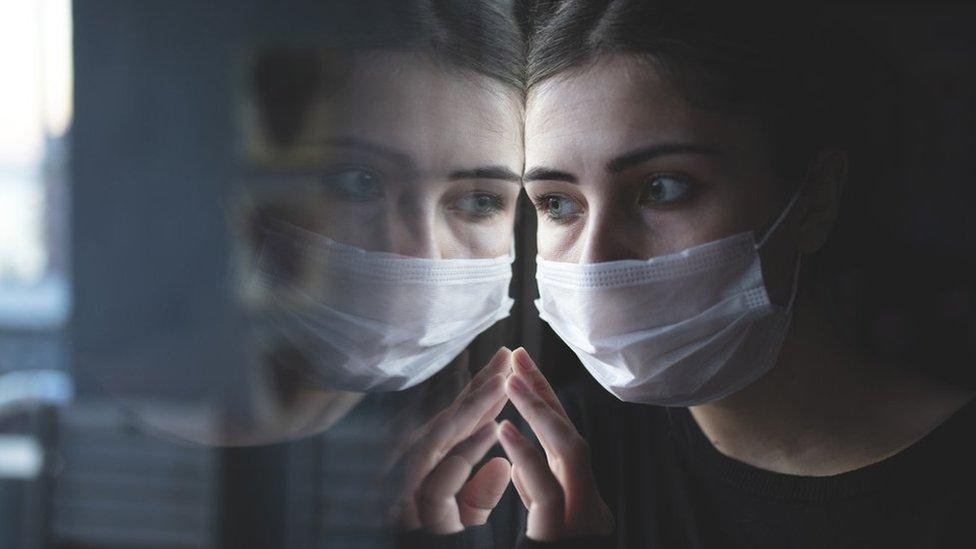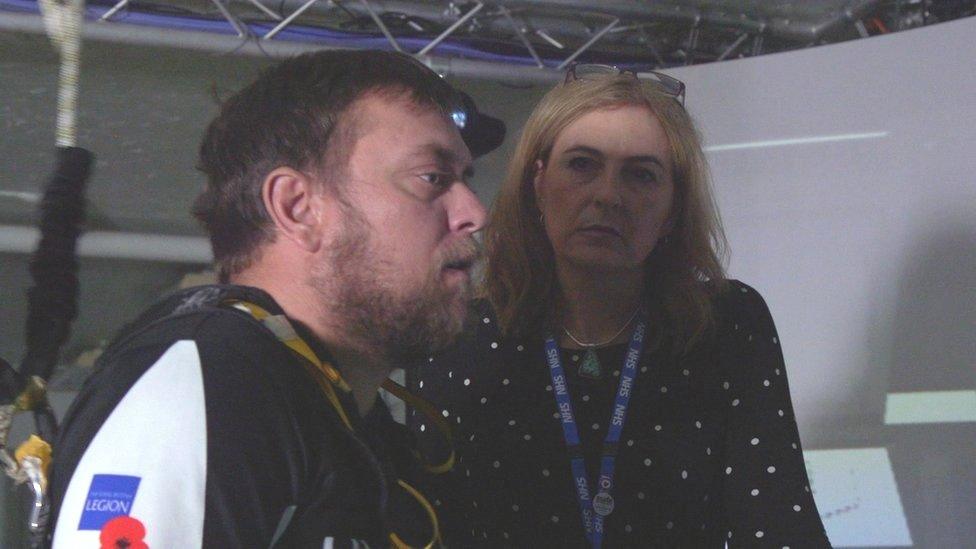PTSD: Eyes can reveal previous trauma, study reveals
- Published

The pupils of someone with PTSD have an exaggerated response when viewing exciting or dangerous images, the study found
A person's pupils can reveal if they have suffered a traumatic experience in the past, according to new research.
The joint Swansea and Cardiff universities study found the eyes of people with Post Traumatic Stress Disorder (PTSD) behave differently.
It found their pupils have an exaggerated response when viewing exciting or dangerous images.
Those behind the study said it could be useful in diagnosis, treatment and in bench-marking progress.
Normally pupil size fluctuates with changing light levels, but it can also alter when a person is scared, excited, or even concentrating hard.
Shocking or surprising images can cause pupils to enlarge, however the researchers discovered this reaction was highly exaggerated in people who have experienced a traumatic event.
Three groups of people were tested - some with diagnosed PTSD, others who had experienced a traumatic event but had no PTSD, and a control group of people with no previous issues.

Prof Nicola Gray is professor psychology at Swansea University
Prof Nicola Gray, of Swansea University, co-authored the study with Prof Robert Snowden of Cardiff University.
She said: "The pupil normally shows a fast constriction when the person sees a new image, but then the pupil gets bigger - especially if the picture is arousing, such as a scary image of, for example, fierce animals or weapons.
"However, the patients with PTSD behaved differently in both phases. First, their pupil did not constrict much when shown a new picture, and then it expanded more to the scary images than for people without PTSD."
Could virtual reality help treat PTSD in veterans?
One man with PTSD who wished to remain anonymous described how, after his time in the Army, he was left unable to drive at night because his pupils could not contract sufficiently in response to street lights and on-coming headlights, leaving him dazzled and unable to see properly.
The research found the PTSD group showed enlarged pupils to images which were positive and exciting.
"When we displayed exciting scenes, such as a sporting triumph or an image of a person sky-diving, these images elicited the same enhanced pupil response in the PTSD group as the frightening pictures," Prof Snowden said.
"The subjects weren't frightened by these images, but the images were arousing. Once again, the people with PTSD showed a far greater response, indicating that they were even more aroused by these images than the other participants".
According to Prof Gray this finding could help to develop new therapies for PTSD.
"If exciting, but non-threatening, images elicit the same response, then it may be possible in the future to use them to gradually reduce the arousal levels of people experiencing PTSD."

What is Post-traumatic stress disorder (PTSD)?
PTSD is an anxiety disorder caused by very stressful, frightening or distressing events.
Someone with PTSD often relives the traumatic event through nightmares and flashbacks, and may experience feelings of isolation, irritability and guilt.
They may also have problems sleeping, such as insomnia, and find concentrating difficult.
These symptoms are often severe and persistent enough to have a significant impact on the person's day-to-day life.
Causes of PTSD can include:
serious road accidents
violent personal assaults, such as sexual assault, mugging or robbery
serious health problems
childbirth experiences
Source: NHS , external


The pupil is the opening in the middle of the iris
Prof Gray said the research may also be useful from a diagnostic perspective.
"PTSD comes in many forms, from people who have experienced a one-off sudden event like a car crash, to those who have gone through many traumatic events over a period of months or years via abuse.
"Sometimes people struggle to express these thoughts, or might even play them down in order to please the therapist.
"Having a more objective method to look for these signs of hypervigilance and hyperarousal may be useful in order to obtain a more accurate benchmark of how the person is progressing."
- Published22 July 2020

- Published1 October 2019

- Published3 July 2019
